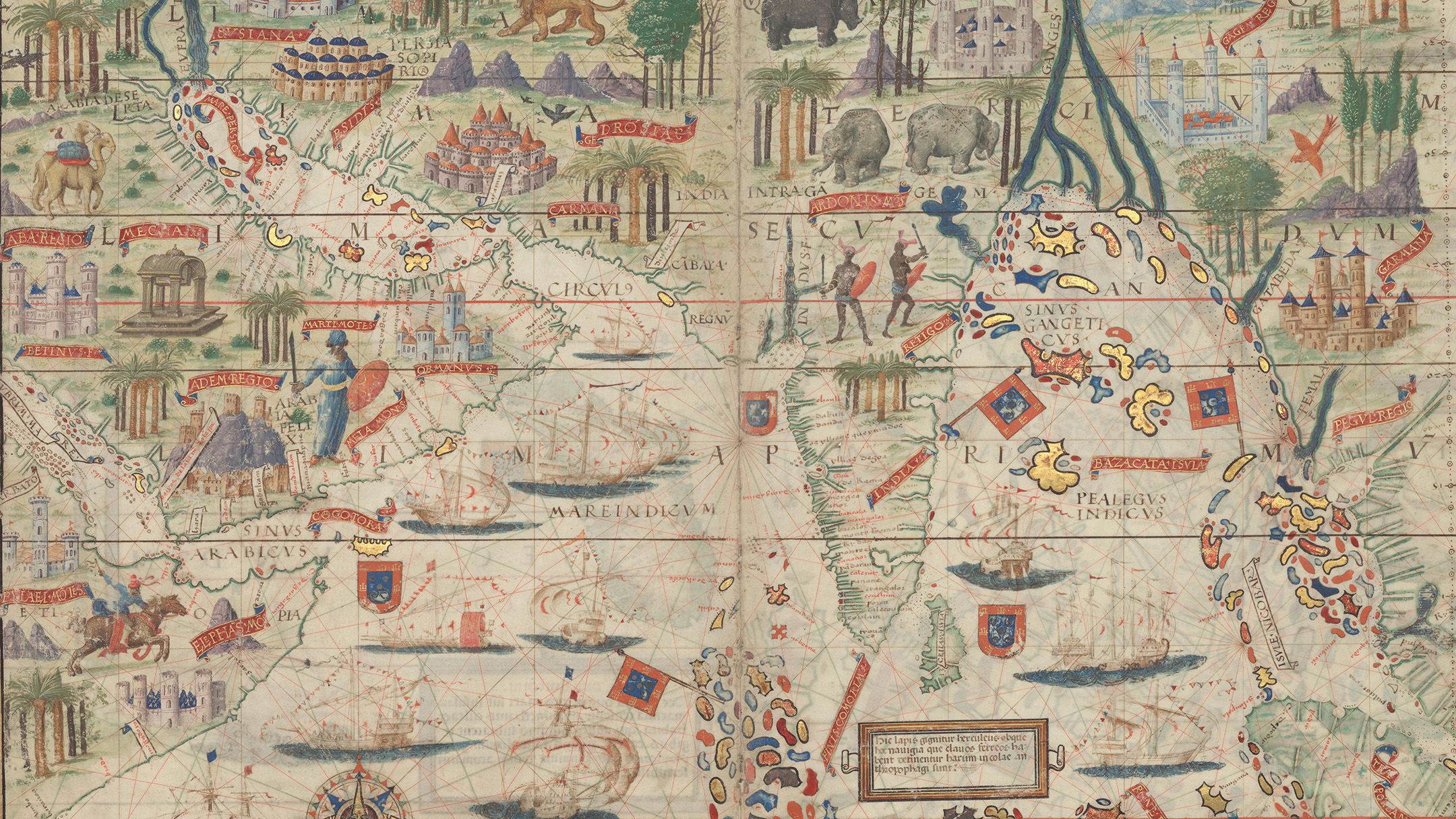Chaganti, Seeta. "Teaching 'Merciless Beauty' in juxtaposition." Throughlines. www.throughlines.org/suite-content/teaching-merciless-beauty-in-juxtaposition. [Date accessed].
Teaching "Merciless Beauty" in juxtaposition
Questions to open up a conversation with your students about medieval poetry and carceral justice.

One of my main pedagogical priorities in teaching early literature is preventing students from falling into generalizations about courtly love, the place of women in society, the role of Christianity, etc. Students will often cling to this kind of generalization because it feels familiar to them, but obviously they do not have the expertise or (usually) the time and space to do the research to support their broad generalizations, which they would find contradicted if they did anyway. I generally try to be as focused as possible in how I ask questions and direct them to the text to keep them from having the room to make assumptions. This does not always succeed, but these prompts and questions reflect an effort in that direction.
One way I do this is by juxtaposing the poem “Merciless Beauty” with the documentary film The Prison in 12 Landscapes.
Before beginning our discussion, I ask students to write in a shared document or discussion board:
Contribute at least one comment about this film, how it might relate to the use of time in "Merciless Beauty," or anything else that occurs to you about the film and the poem. Some ideas to consider:
- How each seems to understand the idea, image, or reality of prison.
- How each asks you to think about how you are moving through time and how incarcerated persons experience time.
- What role repetition plays in each.
- Any other thoughts.
Follow-up class discussion
With these shared ideas in mind, the class could turn to different possible moments in the text for further consideration.
For example, one moment I like to discuss in class occurs at lines 14-16
So hath your beautee fro your herte chaced
Pitee, that me ne availeth not to pleyne;
For Daunger halt your mercy in his cheyne.
In translation:
Your beauty has so chased pity from your heart that it does me no good to complain, for Daunger (the class should look this up in the MED) holds your mercy in its/his chain.
These lines are useful first because of their complicated and deceptive syntax. This is a good opportunity to make students identify the subjects, objects, and verbs, and rearrange these in a straightforward s-v-o order so they understand who is doing what to whom in the passage.
Questions to ask about the poem
- How do you understand the image of Daunger holding mercy in his chain? This is a good place to look at the MED together for the definitions of Daunger. Think about the linguistic phenomena it reflects and its relation to our current sense of the word and how we might narrate that trajectory. Is the modern sense of danger a possible resonance in this line?
- How would you talk about the relationship between the linear image of Daunger holding mercy in a chain and the convoluted syntax of this sentence?
- Why do you think an image of confinement is introduced here? (Ideally, you would want students to think about how this image anticipates the prison in the next section. This could lead to further points about time in the poem, the way time itself imprisons the speaker or subject in creating this sense of inevitability around imprisonment.)
- Studying this passage could create a transition to The Prison in 12 Landscapes, or one could move to the passage that explicitly mentions the prison (lines 26-29). I think most literature teachers will know how to handle the latter in the context of the questions above, so I focus on the film. It is interesting to see the association of the prison with quantity, accounting, etc. in light of the prison industrial complex as a profit industry.
Questions to ask while juxtaposing the film
(It’s helpful to start with a more impressionistic/subjective question to open the discussion of the film since it is such a radical shift in subject matter.)
- Which vignettes did you find especially interesting and why? What questions came up for you in watching the film?
- What are different ways the film shows us the experience of time’s passage in prison through its different topics?
- How does the film help us see the role time plays in the poem? In particular, what might you realize now about the poem’s use of time and repetition that you didn’t realize before?
(Students at my university are often very well versed in the critique of carceral systems, especially their disproportionate effects on racial minorities in the US. Their preexisting knowledge helps lead to important questions about reforming the system from within vs. abolishing the whole system and starting with something different, something that frees us from the racial hierarchies and inequities in which we all suffer. At this point, it’s interesting to return to the poem and ask students to consider how it helps them to think about this question of reform vs. abolition.)
- To what extent does the poem seek to escape its own structure? Or, to what extent is it trying to change things within its overall framework—while leaving the framework through which it expresses itself intact? How does the roundel form participate in a potential conflict about reform?
- How can these ideas from the poem contribute to a contemporary discussion about seeking racial and social justice? Is it possible to have this conversation using a Middle English text? What are its limits?
Further learning

"Merciless Beauty" and carceral justice
“Merciless Beauty” is a poem written in a late 14th-century English that may or may not be Chaucer’s but is highly comparable to Chaucer’s usage. Reading the poem alongside the film The Prison in 12 Landscapes, students are asked to make connections between the poem and the film and their formal examinations of time, incarceration, and repetition.


.jpg)




